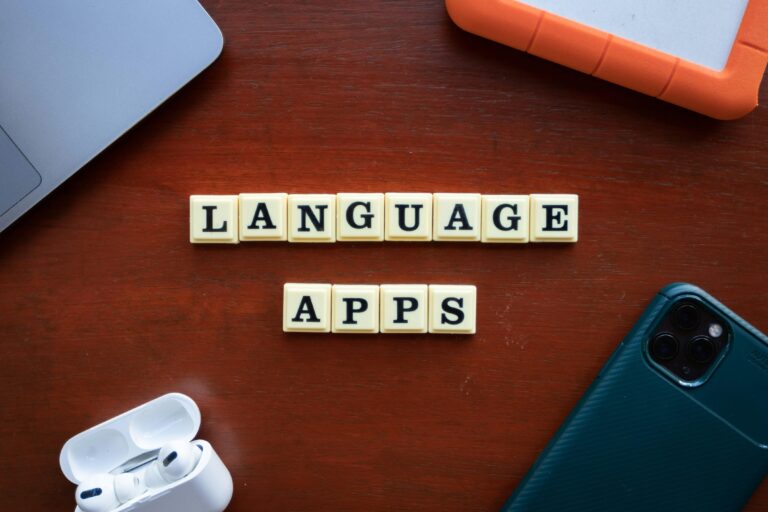In a dynamic shift for language education, several new language learning apps have entered the market, introducing groundbreaking tools designed to enhance user engagement and accelerate proficiency. These innovative platforms leverage advanced technologies such as artificial intelligence, speech recognition, and immersive virtual environments to offer personalized and interactive learning experiences. As the demand for effective and accessible language acquisition grows globally, these cutting-edge applications are setting new standards in how learners connect with and master foreign languages.
Table of Contents
- Emerging Technologies Transforming Language Acquisition
- In-depth Analysis of User Engagement and Effectiveness
- Expert Recommendations for Selecting the Right Language Learning App
- Future Trends Shaping the Language Education Landscape
- Wrapping Up
Emerging Technologies Transforming Language Acquisition
Recent advancements in artificial intelligence and augmented reality are revolutionizing the way language learners engage with new vocabulary and grammar concepts. Cutting-edge applications now utilize AI-driven speech recognition to provide instant, precise feedback on pronunciation, helping users improve with real-time corrections. Furthermore, immersive AR experiences enable learners to practice languages in contextual, interactive environments, enhancing retention and practical usage far beyond traditional methods.
Developers are integrating a variety of innovative features that cater to personalized and adaptive learning paths, including:
- Neural network-powered chatbots simulating natural conversations at various difficulty levels
- Smart flashcards leveraging spaced repetition algorithms for efficient memory reinforcement
- Multimodal learning tools combining audio, visual, and kinesthetic stimuli
- Real-time cultural insights and contextual cues embedded within lessons
| Feature | Benefit | Example App |
|---|---|---|
| AI Pronunciation Coach | Instant, personalized corrections | SpeakEasy Pro |
| AR Immersive Scenarios | Contextual practice in real-world settings | LinguaSpace |
| Adaptive Learning Path | Tailored lessons based on user progress | FluentNext |
In-depth Analysis of User Engagement and Effectiveness
Recent user data reveals that the introduction of AI-powered conversation simulators and gamified vocabulary challenges has significantly increased engagement rates across language learning platforms. Users are not only spending more time on the apps but are also demonstrating higher retention levels, attributed to the personalized learning paths these innovative tools offer. In addition, social features such as community challenges and peer-to-peer practice have fostered a greater sense of motivation, with feedback loops enhancing both user satisfaction and learning outcomes.
Key engagement metrics highlight the following trends:
- Daily active users surged by an average of 35% within two months post-launch.
- Lesson completion rates improved by up to 40%, indicating higher learner commitment.
- Average session duration extended by 25%, reflecting deeper immersion.
| Feature | Engagement Increase | Effectiveness Score* |
|---|---|---|
| AI Conversation Simulator | +42% | 9.2/10 |
| Gamified Vocabulary Challenges | +37% | 8.7/10 |
| Peer-to-Peer Practice | +30% | 8.9/10 |
Expert Recommendations for Selecting the Right Language Learning App
Choosing the ideal language learning app goes beyond flashy features or user-friendly interfaces. Experts suggest prioritizing customizable learning paths that adapt to individual goals and proficiency levels. It’s equally important to assess the credibility of content creators and the linguistic authenticity embedded within exercises. Apps integrating real-time feedback mechanisms or AI-driven corrections often yield better retention and engagement rates, making these features invaluable.
Moreover, consider apps that foster interactive communication through built-in conversation practice or community engagement forums. Below is a concise comparison highlighting core elements that linguistic specialists recommend evaluating before committing:
| Criteria | Key Benefit | Example Feature |
|---|---|---|
| Personalized Content | Boosts learner motivation | Adaptive quizzes |
| Immersive Tools | Enhances real-life application | Speech recognition |
| Community Support | Encourages consistent practice | Peer chat rooms |
Future Trends Shaping the Language Education Landscape
As technology continues to evolve, language education is undergoing a significant transformation driven by cutting-edge digital tools. Today’s apps are integrating artificial intelligence to offer highly personalized learning pathways, adapting in real-time to a user’s pace, proficiency, and preferred learning style. These innovations include immersive voice recognition systems that provide instant pronunciation feedback and AI-powered chatbots simulating natural conversations, dramatically enhancing speaking skills. Moreover, gamification elements such as achievement badges and interactive challenges are now standard, creating engaging environments that boost motivation and retention.
Emerging trends also reflect a greater emphasis on cultural context and practical usage. New platforms incorporate diverse multimedia resources-from VR-based cultural immersion to authentic video content featuring native speakers-enabling learners to experience languages within real-world settings. Key features driving this shift include:
- Contextual vocabulary building with adaptive flashcards tailored to users’ environments
- Collaborative learning through virtual language exchange communities and peer feedback
- Integrated assessment tools offering detailed progress reports and personalized suggestions
| Feature | Benefit | Example Usage |
|---|---|---|
| AI Pronunciation Coach | Corrects accent and tone instantly | Real-time pronunciation exercises |
| VR Cultural Immersion | Simulates natural environment learning | Exploring marketplaces, cafes in target country |
| Peer Language Exchange | Enables conversational practice with natives | Scheduled language buddy chats |
Wrapping Up
As the landscape of language education continues to evolve, these new language learning apps exemplify the integration of innovative technology designed to enhance user engagement and proficiency. By incorporating features such as AI-powered tutors, immersive speech recognition, and personalized learning pathways, they offer promising tools for learners at all levels. As these applications gain traction, they are poised to redefine how individuals acquire new languages, making the process more accessible, efficient, and tailored to modern needs. Staying informed about these technological advancements will be essential for educators, learners, and industry stakeholders alike.

